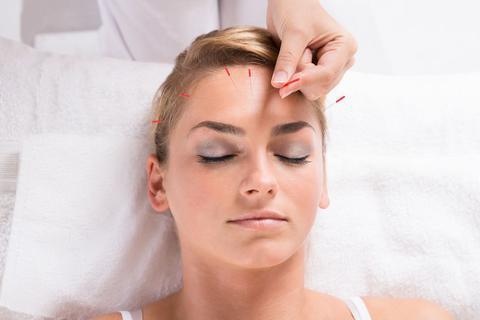To better understand how acupuncture needles are made, we look to the basic components which form the tool. The five main parts of a needle are the handle, shaft, needle tip, lubricant, and the tube, plastic retainer, or friction zone maintained.

Handle
First, the handle can either be made using pipe, plastic, wire-wound with no loop, or wire-wound with a loop. Some are designed for ease of manufacturing while others are meant to represent aesthetic. Then, there are those with a specific clinical or practical value in mind.
Lubricant
Some acupuncture needles are coated with lubricant, usually a bio-inert material like silicone. There are more than 2,000 types of silicone coatings which can be used, some low-end which may not remain strict to the needle body. There are also different coating methods, which sometimes leaves microscopic droplets at the end of the needle. Lubrication is important, like materials used and method of application. Be sure to buy your acupuncture needles from a reputable, high quality source.
The pipe handle
The pipe handle on an acupuncture needle is aluminum alloy or stainless steel caps placed over the shaft to secure the handle to the shaft. The pipe handle is scored to create better grip for a practitioner. Aluminum is generally lightweight and very conductive, making them ideal for electro-stimulation. It’s worth keeping in mind some pipe handles are bulkier than others, which can make using them a learned skill and somewhat awkward around small, tight areas of the body.
The shaft
In the anatomy of an acupuncture needle, the shaft is made from surgical stainless steel wire. Generally, one is either using inexpensive Chinese steel with metallurgical impurities known to affect the smoothness and flexibility of the needle, or are using higher-end surgical steel which does not oxidize, with a lower nickel content, and which are ideal for patients with metal allergies.
Needle tip
The needle tip is usually hand sharpened, which means consistency can vary a little needle to needle. Higher end needles are machine ground, thankfully, which helps to reduce these inconsistencies. Every brand of needle can have its own style, slightly adapting to a different angle or edge.
Tube, plastic retainer, or friction zone
Searching for acupuncture needles in Canada, you’ll find tubes have grown in popularity as the easiest method of inserting needles below the surface of the skin. Tubes can vary in diameter, quality, and cost. Then, there are some which use plastic retainers instead of tubes. A lot of acupuncture practitioners tend to favor friction zones which provide a one-step press or tap method.
Across an acupuncture needle, each of these elements needs to be manufactured just right in order to ensure a high quality end-product.

